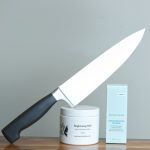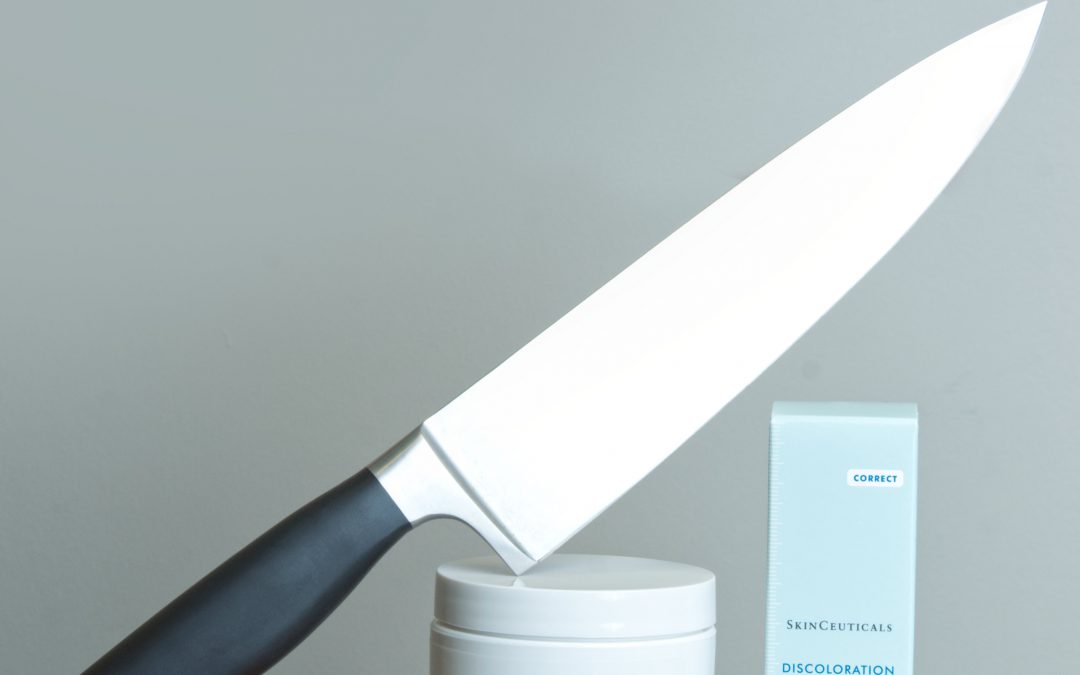The go-to skin lightener in my facial plastic surgery practice is the one with the longest track record of success, 4% Hydroquinone. This medication works by suppressing the ability of the melanocytes, the skin cells that make pigment, to produce melanin, the compound that we see as pigment. In my practice, I only use this single strength, as the over the counter strength 2% Hydroquinone has little to no effect, and the stronger 6% and 8% Hydroquinone are more prone to side effects like skin irritation that prevents use, as well as too much suppression of the pigment. In its 4% and higher strengths, Hydroquinone is a prescription skin lightener and is only available at the pharmacy or through medical offices.
How to use Hydroquinone
Our preferred formulation of skin lightener in pads soaked with 4% Hydroquinone, and supplied in 60-day bottles. There is a limited shelf life due to the chemical instability of hydroquinone, so the best effects are obtained when used early. One pad is applied to the face (skipping the eyelids) in the morning before applying Vitamin C (see Third Chef’s Knife post). Hydroquinone is a sun sensitizing medication, so it must be used with a sunblock.

Hydroquinone pads and Discoloration Defense
Alternatives to Hydroquinone Pads
After the hydroquinone pads, my favorite hydroquinone formulation is in the Obagi Nu Derm kit, with the #3 Clear and the #5 Blender. The Blender is made to be mixed with a Tretinoin (see First Chef’s Knife), and when using the Obagi Nu Derm System, people actually get the 4% Hydroquinone twice a day. In fact, Hydroquinone is the main ingredient driving the great results obtained with this system.
Alternatives to Hydroquinone
Just like the Vitamin A Derivatives (see First Chef’s Knife) discussion highlighted compromises that the industry makes so that products could be sold directly to consumers online and at retail stores, the same considerations have affected the skin lighteners. To avoid the 4% Hydroquinone “prescription strength”, they have resorted to “non-hydroquinone” lighteners. These include Kojic Acid and Arbutin, which are chemically very similar to hydroquinone and are actually converted to hydroquinone in the skin. Though very effective, I still stick with the gold standard lightener, 4% Hydroquinone, and use these alternatives when someone is done with a treatment regimen.
These are useful products, and one of my favorites at the moment is the Skin Ceuticals Discoloration Defense, which does the work of lightening skin in the “off-season”.
Hydroquinone Treatment Regimen
Based on skin type, I typically have a budget of 4-6 months of hydroquinone use in a year. This is the maximum, and I do not do this on an ongoing basis. Lighter skin types are safer to use it for 6 months, compared to darker skin types, which I prefer 4 months of use. In between treatment cycles (which are each 2 months long) and after treatment for maintenance, the Skin Ceuticals Discoloration Defense is my product of choice.

